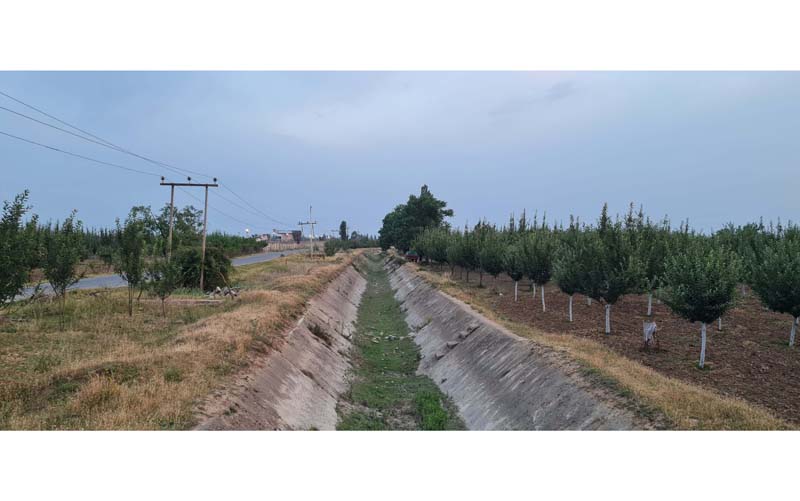
I&FC has no drought pumps to mitigate crisis
Suhail Bhat
SRINAGAR, June 13: Farmers across Kashmir are confronting a scarcity of irrigation water in their fields as the Jhelum and its tributaries, water level have dropped to a 65-year low, rendering the majority of lift irrigation schemes inoperable.
According to official estimates, the Sangam gauge reading has reached 0.74 feet, which is lower than the lowest ever measurement of 0.75 feet, which was recorded in November of 2017. According to the department’s 55-year-old record book, this is the first time they have seen this level.
“At this time, the water used to flow above 3-feet, but the level is several notches below the average this time, which is a worrying sign because it will negatively impact the irrigation facilities,” an official said.
According to the department’s data, 72 of the Valley’s 394 vertical irrigation projects, or 20% of the irrigation systems, are no longer active. The districts of Pulwama, Budgam and Kupwara have been hit the hard. “If the situation persists, we might issue an advisory to farmers to not go for paddy crop this time in these areas,” a senior official told Excelsior.
However, to make matters worse, no drought pumps are available with the department to mitigate the crisis. “The department is not prepared for the crisis because no-drought pumps are available. They cannot be made available at this time because they must be procured with a good design, which takes three months on an average. The department does not have a backup pump,” he explained.
He said that the department can do nothing to avert the situation right now and that only excellent rainfall can save the crops. “This is a disaster. We can only hope for precipitation, and even that will only provide temporary relief as the water level should be above 3 feet,” an official said.
Farmers are highly concerned about the impact of the hard weather on their crops because they are unable to water their fields. The situation has deteriorated to the point where rice fields have developed cracks due to a shortage of irrigation water, and with the absence of rainfall situation is worsening each passing day.
The water level at the Marwal Irrigation Scheme in Jhelum, which supplies water to several areas in the South and Central Kashmir, is several feet below the allowed level. The irrigation project has become non-functional, resulting in the drying up of around 400 hectares of paddy land in several areas.
“The pump has been running for almost 70 years, and we have had irrigation issues before, but they typically went away with rain, but this time there appears to be no end in sight. We demand that a drought pump be installed,” Ghulam Mohammad Naikoo, a farmer, said. He added that the department’s refusal to stop excessive sand mining near the pump station has exacerbated river bed erosion.
Echoing him, an official said uncontrolled sand mining on the other side of the pump station has raised the depth of the river bed, which is now more than 30 feet at several locations. “We have no way of knowing how deep it is. More suction pipes are being used to the pump the water which has resulted in its overloading and frequent breakdowns,” he added.
Dr Irfan Rashid, an Earth Science Professor at Kashmir University, said that the instrumental records in Jammu and Kashmir indicate that temperatures in March and April in this region were exceeded by something like 9-12 Degrees Centigrade, which caused a massive melt of the snow, as well as the glacial reserves. “This problem was compounded because, in the Kashmir region, we received a very small amount of snowfall as compared to last year,” he said.
He said that the region also received low snowfall during Chilliai Kalan, the 40-day harshest period of winter, this year, “The snow accumulation during this time or snow on the landscapes becomes very important to sustain irrigation, hydropower and tourism sectors or the indirect sectors of the economy which are dependent on it,” he said.
The water level has also dropped in most of the streams including as Rambi Ara, Romshi, Laar and Vushow. They are nearly dry, potentially affecting vegetation and agriculture.

